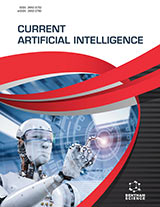Abstract
Aims: The purpose of this study is to determine under what conditions, such as noise and malfunction, successful consensus achievement in swarm robotics is possible.
Background: Swarm robots can be used to solve exploration problems, such as the best-of-n problem. Consensus achievement plays a crucial role as the swarm must collectively agree on a solution. This task can be even more challenging considering noise and malfunctioning or rogue agents.
Objective: This study aims to determine how robust the consensus achievement algorithm is against noise and rogue agents, considering the effect of adding memory to the agents and further parameter tuning.
Methods: We implement a baseline based on the democratic honeybees algorithm and investigate the performance and robustness of the consensus achievement during a number of computational experiments. In particular, the number of agents in the swarm, the number of iterations, the number of positions an agent can visit per iteration, the number of neighbors an agent shares its best option with, and the majority threshold defining the majority based on a fraction of agents in the swarm, and the minimum number of iterations to achieve consensus are investigated regarding their impact.
Results: For better performance, memory has been implemented so that each agent remembers and retains their previous highest quality score if no one better has been found in the current exploration phase. We show that the algorithm is viable and offers robustness in the considered scenarios when memory is added. In particular, we establish a baseline for the democratic honeybees algorithm and ascertain adequate parameter values to ensure the algorithm's best performance. The algorithm is sufficiently robust against noise, and to an extent, against rogue agents. Furthermore, parameter tuning also proved to help the swarm explore very large search spaces.
Conclusion: The consensus algorithm appears sufficiently effective under adverse conditions such as noise and rogue agents, especially when countermeasures are considered.
Other: Further scenarios such as specific communication topologies could be investigated in future research.
Keywords: Index Terms: best-of-n, swarm robotics, democratic honeybees, consensus achievement, collective decision making
[http://dx.doi.org/10.1140/epjb/e2008-00334-3]
[http://dx.doi.org/10.3389/frobt.2017.00009]
[http://dx.doi.org/10.1109/SSCI.2018.8628646]
[http://dx.doi.org/10.1088/1757-899X/919/4/042025]
[http://dx.doi.org/10.1109/CEC48606.2020.9185581]
[http://dx.doi.org/10.1038/s41598-020-66115-5] [PMID: 32546693]
[http://dx.doi.org/10.1109/ICRA40945.2020.9196584]
[http://dx.doi.org/10.1109/TIT.2010.2050940]
[http://dx.doi.org/10.1142/S0218001416600090]
 1
1



















